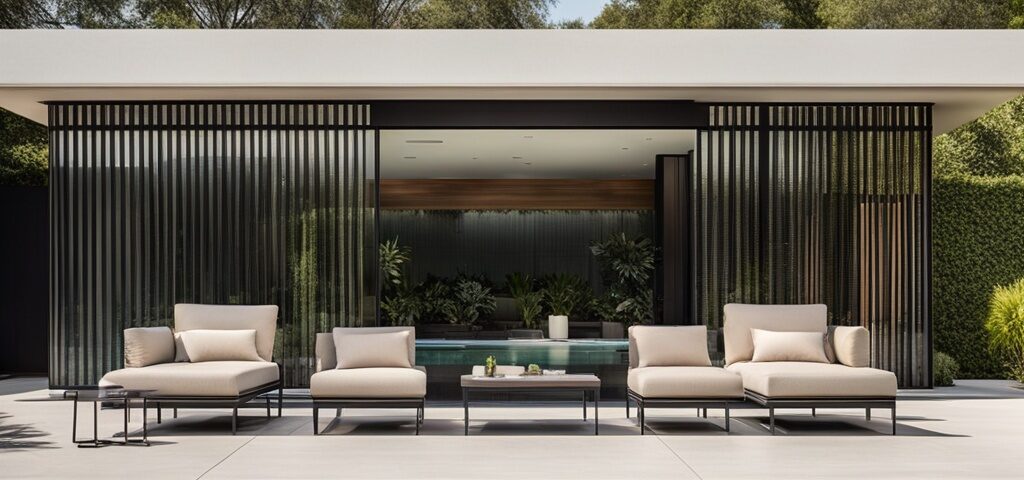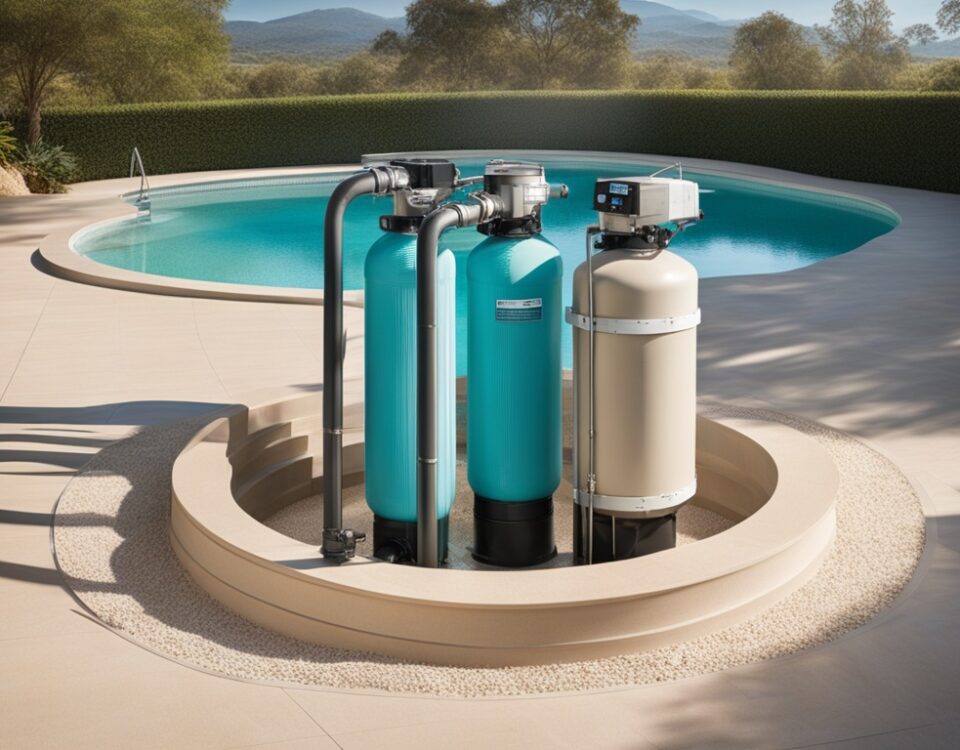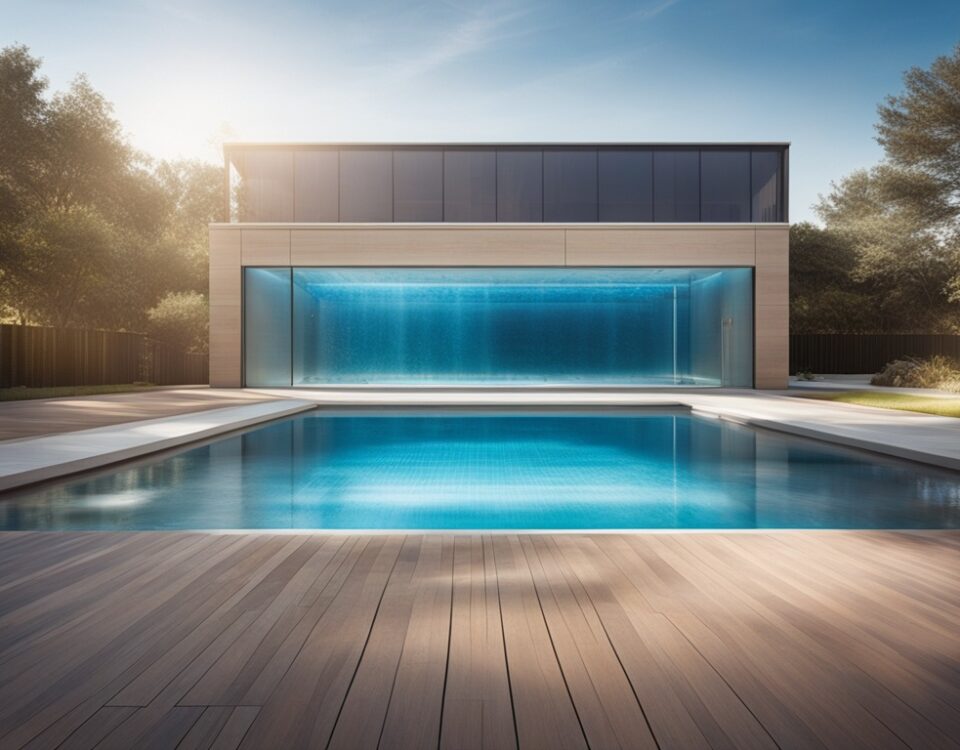2025’s Top-Rated Pool Pumps Unveiled: Enhance Your Summer Splashes!

Dive into DIY: Mastering the Art of Building a Backyard Swimming Pool
May 6, 2025
Dive into Opulent Elegance: Luxury Pool Design Trends Revealed
May 6, 2025Overview of Pool Pumps in 2025
In the realm of pool maintenance, pool pumps stand as the unsung heroes, ensuring that your aquatic oasis remains both inviting and hygienic. As we progress into 2025, the significance of these essential devices cannot be overstated. A well-functioning pool pump is crucial for *circulating water*, *filtering impurities*, and *maintaining optimal chemical balances*, thereby fostering a clean and healthy swimming environment. Neglecting the pool pump can lead to murky water, algae growth, and an overall unsatisfactory swimming experience.
The Role of Pool Pumps
Pool pumps play a pivotal role in the *hydraulic system of a pool*, operating by drawing water from the pool, sending it through a filtration system, and then redistributing the purified water back into the pool. This continuous cycle not only keeps the water clean but also helps in controlling chemical concentrations and temperature, making the swimming experience more enjoyable. An efficient pool pump directly correlates with energy conservation and operational costs, allowing pool owners to enjoy their investment without *breaking the bank*.
Advancements in Pool Pump Technology
The advancements in pool pump technology leading up to 2025 are remarkable. Manufacturers have integrated cutting-edge *Variable Speed Technology*, allowing pumps to operate at different speeds based on the pool’s specific needs. This innovation results in substantial energy savings, with some models boasting a *70% reduction* in energy consumption compared to traditional single-speed pumps. Such efficiency not only benefits the environment but also translates into significant cost savings for the homeowner.
Moreover, the advent of smart technology has transformed pool pumps into intelligent devices. Modern pumps are equipped with *Wi-Fi connectivity*, enabling users to control and monitor their pumps remotely through mobile applications. This feature allows for real-time adjustments and alerts, ensuring optimal performance without the need for constant oversight. Such advancements embody the marriage of convenience and efficiency, making pool maintenance a seamless experience.
Sustainability and Eco-Friendliness
As the world grapples with environmental challenges, the pool pump industry has responded by embracing sustainability. Many pumps now feature eco-friendly construction materials and energy-efficient motors that comply with stringent environmental regulations. With an ever-growing emphasis on reducing one’s carbon footprint, selecting a pump that prioritizes eco-friendliness is not just a trend, but a responsible choice for the conscientious pool owner.
The year 2025 will also see a wave of innovative designs that promise to further enhance the functionality of pool pumps. Some manufacturers are venturing into solar-powered pool pumps, harnessing solar energy to provide a sustainable and cost-effective solution for pool maintenance. Such innovations not only elevate the *performance level* of pool pumps but also align with the global shift towards *renewable energy sources*.
| Features | Traditional Pumps | Advanced Pumps (2025) |
|---|---|---|
| Energy Efficiency | Low | High |
| Control | Manual | Smart/Remote |
| Noise Level | High | Low |
| Maintenance | Frequent | Minimal |
| Environmental Impact | High | Low |
Variable Speed vs. Single Speed Pool Pumps
When it comes to choosing the best pool pump for your swimming pool in 2025, understanding the differences between variable speed and single speed models is crucial. These two types of pumps present distinct operational dynamics, cost implications, and efficiency levels that can significantly influence your pool’s maintenance costs and environmental footprint.
Efficiency Comparison
The primary distinction between variable speed and single speed pool pumps lies in their efficiency. Single speed pumps operate at a fixed speed, typically running at about 3,450 RPM, which can lead to higher energy consumption—especially during peak usage times. In contrast, variable speed pumps utilize advanced technology to adjust the motor speed according to the specific needs of the pool. This flexibility allows for lower energy consumption, with estimates suggesting up to a 90% reduction in energy costs over time compared to traditional single speed models.
Cost-Effectiveness Analysis
While single speed pumps usually have a lower upfront cost, their long-term operational costs can quickly overcome initial savings. Homeowners may find that, despite their attractive price point, the energy costs over several years add up to significant amounts. On the other hand, a variable speed pump may involve a higher initial investment but will typically yield substantial savings on your energy bill over its lifespan.
| Pump Type | Initial Cost | Energy Efficiency | Average Annual Operating Cost |
|---|---|---|---|
| Single Speed | Low | Standard | High |
| Variable Speed | High | High | Low |
Benefits of Upgrading to a Variable Speed Pump in 2025
Upgrading to a variable speed pump in 2025 may offer compelling advantages. Firstly, many states are now incentivizing energy efficiency, providing rebates and tax credits for consumers who switch to more eco-friendly options. By investing in a variable speed model, pool owners can make eligibility claims, further lowering the overall cost. Moreover, the quiet operation of variable speed pumps enhances the *aesthetic experience* of pool environments, allowing for peaceful enjoyment without the intrusive noise commonly associated with single speed pumps.
Environmental Impact Considerations
In an era increasingly focused on sustainability, the environmental benefits of variable speed pumps cannot be overlooked. By significantly reducing energy consumption, these pumps help lower greenhouse gas emissions, contributing to a healthier planet. Moreover, with features like programmable settings, owners can optimize energy usage without sacrificing pool cleanliness, highlighting the intersection of convenience and environmental responsibility in modern pool equipment.
Final Thoughts on Choosing a Pump
Ultimately, the decision between a variable speed or single speed pool pump should consider both immediate and long-term needs. While single speed pumps may seem appealing for their affordability, the efficiency, cost-effectiveness, and sustainable advantages of variable speed pumps present a compelling case for pool owners looking to upgrade in 2025. The future of pool maintenance lies in intelligent choices—investing in technology that champions not only your pocket but the environment as well.
Energy-Efficient Pool Pumps for Sustainability
As we stride into 2025, a notable trend has emerged in the swimming pool industry: the surging popularity of energy-efficient pool pumps. These state-of-the-art devices are not merely a passing fad; they represent a profound shift towards sustainability in pool management. With an increasing awareness of climate change and environmental responsibility, pool owners are beginning to recognize the significant advantages of adopting these innovative technologies.
The Rise of Energy-Efficient Technology
Energy-efficient pool pumps utilize modern technology that enables them to operate with reduced energy consumption compared to their conventional counterparts. Typically, these pumps feature variable speed motors that can be adjusted to meet the specific requirements of the pool at any given time. By operating at lower speeds during off-peak hours, these pumps conserve energy, which not only reduces electricity bills but also lessens the overall carbon footprint associated with swimming pool maintenance.
Environmental Benefits of Energy-Efficient Pumps
The environmental benefits of employing energy-efficient pool pumps are manifold. Firstly, these pumps contribute to a significant decrease in greenhouse gas emissions. When compared to traditional single-speed pumps, energy-efficient models can reduce energy consumption by up to 80%. This reduction translates into lower demand for electricity, which is often generated from fossil fuels, thus directly mitigating the adverse effects of climate change.
Cost-Effectiveness Over Time
While the initial investment for energy-efficient pool pumps may be higher, the long-term savings make them a wise choice for the environmentally conscious pool owner. Lower operational costs due to reduced energy usage, coupled with potential rebates or incentives from utility companies, can significantly offset the upfront cost. Many pool owners report recouping their investment within just a few years, thanks to decreased energy bills and enhanced durability of these pumps.
Enhanced Longevity and Performance
Furthermore, energy-efficient pumps often boast a longer lifespan compared to traditional pumps, primarily due to their optimized operating systems. These pumps typically experience less wear and tear since they don’t run continuously at full capacity. Instead, they adapt their performance based on the needs of the pool. This adaptability not only extends the pump’s life but also enhances the overall performance of the pool filtration system, resulting in cleaner, clearer water.
| Feature | Traditional Pump | Energy-Efficient Pump |
|---|---|---|
| Energy Consumption | High | Low (up to 80% reduction) |
| Noise Level | High | Quiet Operation |
| Weight of Investment | Low Initial Cost | Higher Initial Cost |
| Operational Cost (Annual) | High | Low |
| Lifespan | 5-10 years | 10-15 years |
In conclusion, the transition to energy-efficient pool pumps is a step towards greater sustainability in pool ownership. As we embrace this technology in 2025, not only do we enhance our immediate environment, but we also contribute to a global movement aimed at preserving our planet for future generations. Making the switch is not just a choice; it’s a responsibility that every pool owner should embrace.
Wi-Fi Connected Pool Pumps for Smart Homes
In today’s technologically advanced world, the integration of Wi-Fi connected pool pumps has ushered in a new era for smart home systems. These innovative devices not only enhance the performance of your pool but also offer an unprecedented level of convenience and efficiency. Homeowners are increasingly embracing the concept of smart pools, which can be seamlessly incorporated into existing smart home platforms such as Google Home, Amazon Alexa, and various proprietary smart home applications.
The Benefits of Wi-Fi Connectivity
One profound advantage of Wi-Fi enabled pool pumps lies in their ability to be monitored and controlled remotely. Whether you are at home or miles away, you can effortlessly manage your pool’s pump settings via a smartphone app. This feature is not just about convenience; it also enables you to optimize your pool’s energy use, ensuring that your pump operates during off-peak hours to reduce electricity costs. Many pumps come equipped with settings that allow you to schedule operations and even monitor energy consumption in real-time.
Enhanced Control Features
Wi-Fi connected pool pumps now offer an array of control features that can elevate your pool experience. For instance, users can initiate system diagnostics remotely to identify and troubleshoot issues before they escalate, saving both time and potential repair costs. Additionally, advanced models come with features that allow you to set filtration cycles and adjust the pump’s speed depending on the weather or pool usage patterns, ensuring your water remains sparkling clean without excessive energy expenditure.
| Feature | Description |
|---|---|
| Remote Monitoring | Check your pool’s status and performance from anywhere. |
| Energy Usage Tracking | Analyze energy consumption to optimize efficiency. |
| Diagnostic Capabilities | Identify issues before they require costly repairs. |
| Customizable Settings | Set schedules and adjust speeds for varied usage. |
Integration with Other Smart Devices
The true brilliance of Wi-Fi connected pool pumps emerges when they are integrated with other smart home devices. Imagine your pump automatically adjusting its filtration cycle based on weather conditions or pool activity detected by a smart pool cover or a smart weather station. This interconnectedness creates a holistic swimming experience, allowing for an environment that is not only well-maintained but also exceptionally energy efficient.
Remote Alerts and Notifications
Another compelling feature of these cutting-edge pumps is the ability to receive real-time alerts and notifications. Homeowners can be promptly informed about system malfunctions, such as low water levels or filter issues, directly to their smartphones. This proactive communication allows for swift action, helping to maintain the health of your pool and ensuring it remains a sanctuary of relaxation.
Cost Considerations
While the initial investment in a Wi-Fi connected pool pump may be higher than traditional models, the long-term savings on energy bills and maintenance costs are significant. With enhanced operational efficiency and the ability to schedule usage based on your lifestyle, these modern pumps often pay for themselves over time. Additionally, many manufacturers are continually innovating, leading to improved lifespan and reliability in their devices, providing homeowners with peace of mind and long-term value.
Quiet Operation and Low Maintenance Features
When selecting the best pool pump for 2025, noise levels and maintenance requirements play pivotal roles that should not be overlooked. A pool pump operates continuously to maintain cleanliness and circulation, which makes it essential to choose a model that operates quietly. Excessive noise can disrupt tranquil outdoor environments and create discomfort for homeowners and guests alike. Therefore, the demand for quieter models has surged, prompting manufacturers to innovate and improve the decibel levels of their pumps.
The Importance of Low Noise Levels
Quiet operation is an indicator of technological advancement in pool pump design. Today’s buyers are discerning, often prioritizing their overall swimming experience over other features. Investing in a pool pump with low operational noise not only enhances user comfort but also contributes to neighborhood harmony, especially in suburban settings where close quarters can intensify sound carry. Models that utilize advanced motor technology or inverter systems are particularly effective at minimizing noise while maximizing performance.
Advantages of Low Maintenance Pool Pumps
Maintaining a pool is inherently labor-intensive, which is why low-maintenance pool pumps have become increasingly attractive to pool owners. A high-quality pump should offer features like self-priming capability, durable materials resistant to corrosion, and efficient sealing mechanisms. Such attributes minimize the frequency and extent of maintenance required, allowing pool owners to spend more time enjoying their oasis rather than servicing it. Less time on maintenance translates to cost savings and increased enjoyment.
Top Pool Pumps for Quiet Operation and Low Maintenance in 2025
| Model | Noise Level (dB) | Maintenance Features | Energy Efficiency |
|---|---|---|---|
| Jandy Pro Series VS FloPro | 45 | Self-priming, easy-access strainer | Variable speed motor |
| Pentair WhisperFlo | 46 | Durable, corrosion-resistant housing | Energy-efficient operation |
| Hayward TriStar VS | 44 | Advanced strainer design, minimal upkeep | Variable speed for optimal efficiency |
| Blue Torrent Kreepy Krauly | 40 | Effortless installation, self-cleaning | Low energy consumption |
Among the elite choices for quiet operation and minimal maintenance in 2025, the Jandy Pro Series VS FloPro stands out due to its exceptionally low noise levels at just 45 dB and its user-friendly maintenance features. Similarly, the Pentair WhisperFlo combines energy efficiency with a durable design that requires little attention. The Hayward TriStar VS and Blue Torrent Kreepy Krauly further exemplify models that marry high performance with minimal upkeep, offering pool owners an efficient, peaceful, and low-maintenance solution.
Conclusion
In summary, selecting a pool pump that operates quietly and requires minimal maintenance is crucial for enhancing your swimming experience and minimizing disruptions. As technology advances, the best pool pumps of 2025 prove that tranquility and efficiency can coexist, offering high-performance features that cater to the needs of modern pool owners.
Longevity and Durability in Pool Pump Design
As we delve into the realm of pool pumps for 2025, the importance of longevity and durability cannot be overstated. Modern pool pumps are engineered not just for efficiency, but also for resilience against the wear and tear that comes with regular usage. In this context, understanding the materials and technology used in pump construction is vital.
Material and Construction Quality
Contemporary pool pumps utilize advanced materials such as *corrosion-resistant plastics* and high-grade stainless steel, which significantly enhance their durability. The incorporation of these materials ensures that the pumps can withstand harsh chemical exposure and fluctuating temperatures, common in various climates. Furthermore, many manufacturers are now offering pumps designed with *sealed motor housings* to prevent water ingress and subsequent damage.
Innovative Engineering Solutions
The engineering behind pool pumps has evolved remarkably, with the integration of *smart technology* and *energy-efficient designs*. In 2025, many pool pumps come equipped with advanced monitoring systems that track performance and alert users about potential issues. This preventive measure is instrumental in extending the lifespan of the pump, as timely interventions can prevent minor issues from escalating into major failures.
Tips for Maintenance and Care
Maintaining your pool pump is crucial for ensuring its longevity. Here are several tips to help you achieve optimal performance:
- *Regular Cleaning*: Keep the pump and its components free from debris and buildup. Regularly check the strainer baskets to prevent clogs.
- *Monitor Water Chemistry*: Maintain balanced water chemistry to mitigate corrosion or scale buildup in the pump.
- *Inspect and Lubricate*: Regularly inspect O-rings and seals for wear and tear, and lubricate moving parts to reduce friction.
Understanding Warranty and Service Options
Another factor to consider when assessing pool pump durability is the warranty provided by manufacturers. Pumps that come with comprehensive warranties reflect a manufacturer’s confidence in their product’s longevity. In 2025, many top-tier pool pumps offer warranties ranging from 2 to 7 years, highlighting their potential lifespan. Be sure to understand the terms of these warranties to take advantage of any available service options.
Pump Lifespans: A Comparative Table
| Type of Pump | Average Lifespan | Key Durability Features |
|---|---|---|
| Single Speed | 5-10 years | *Simple design, fewer moving parts* |
| Variable Speed | 10-15 years | *Energy-efficient, advanced motor technology* |
| Robotic | 5-10 years | *Programmable features, less wear on pump* |
| Above Ground | 5-7 years | *Portable, easier to maintain* |
Expert Reviews and Recommendations for 2025
As we step into 2025, the quest for the *best pool pumps* continues, with a plethora of options available in the market. Our meticulous research, combined with expert reviews and user feedback, has led us to curate a list of top-rated pool pumps suitable for various pool sizes and budgets. Below, we present recommendations that will not only meet your needs but also enhance your pool’s efficiency and longevity.
Top-Rated Pool Pumps for Various Pool Sizes
| Pool Pump Model | Pool Size | Motor Power | Price Range | Key Features |
|---|---|---|---|---|
| IntegraMax 3000 | Above Ground | 1 HP | $150 – $200 | Energy-efficient, quiet operation |
| ProFlow 5000 | In-Ground (Large) | 2 HP | $300 – $400 | High flow rate, durable construction |
| AquaQuiet 1000 | In-Ground (Medium) | 1.5 HP | $250 – $350 | Smart technology, programmable settings |
| EcoWave 400 | Above Ground (Small) | 0.5 HP | $100 – $150 | Compact design, eco-friendly |
| HydraMax 8000 | In-Ground (Extra Large) | 3 HP | $450 – $600 | Powerful performance, heavy-duty |
Recommendations Based on Budget
For those seeking a budget-friendly option, the *EcoWave 400* stands out as an exceptional choice for smaller above-ground pools. Its *compact design* and *eco-friendly* features make it an ideal selection for those who are environmentally conscious without sacrificing performance.
If your budget allows for a *mid-range* investment, the *AquaQuiet 1000* is highly recommended for medium-sized in-ground pools. This model incorporates *smart technology*, enabling users to enjoy *programmable settings* and automated operations that streamline pool maintenance.
For individuals with a *larger budget* or expansive pool installations, the *HydraMax 8000* is the epitome of power. Designed for extra-large in-ground pools, this robust pump delivers unparalleled performance and longevity, ensuring your pool remains pristine and inviting throughout the summer months.
Expert Insights and User Feedback
Experts universally commend the *ProFlow 5000* for its *high flow rate* and *durable construction*, ideal for larger in-ground pools. Users highlight that its reliability and efficiency dramatically reduce energy costs, making it a wise investment for long-term pool care.
As you navigate the options available for pool pumps in 2025, consider these *expert reviews* and *user testimonials*. They provide invaluable perspectives that can guide you to make an informed decision that best fits your *specific needs*, pool size, and budget.
Learn more about Swimming Pool

Javier Morales is passionate about pool design, maintenance, and outdoor living. With years of hands-on experience, he offers practical tips, creative ideas, and expert insights to help readers make the most of their pool spaces. At Piscina Planet, Javier shares everything from seasonal care guides to the latest trends in pool innovation.




